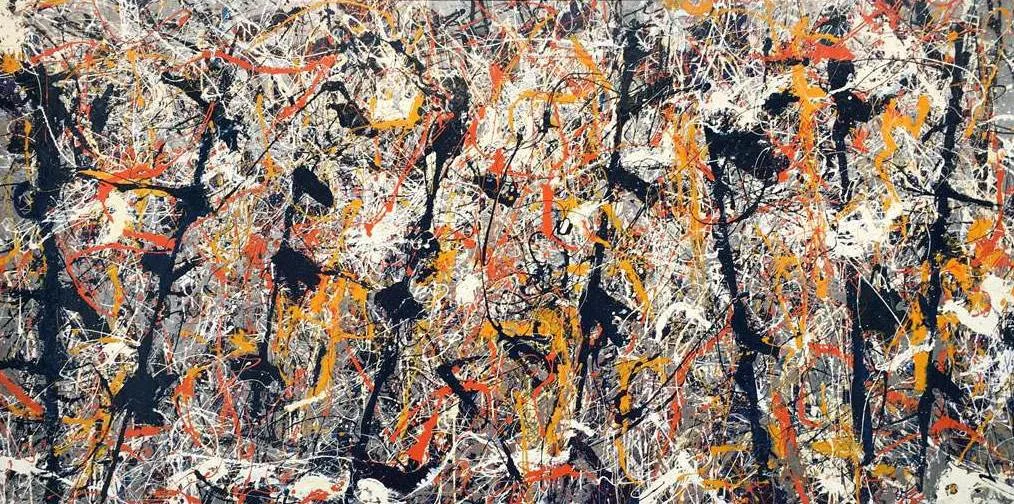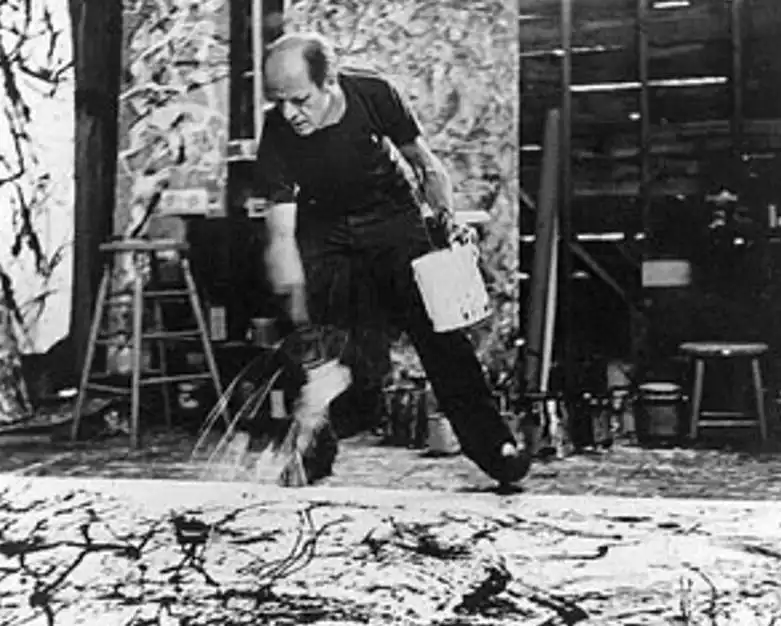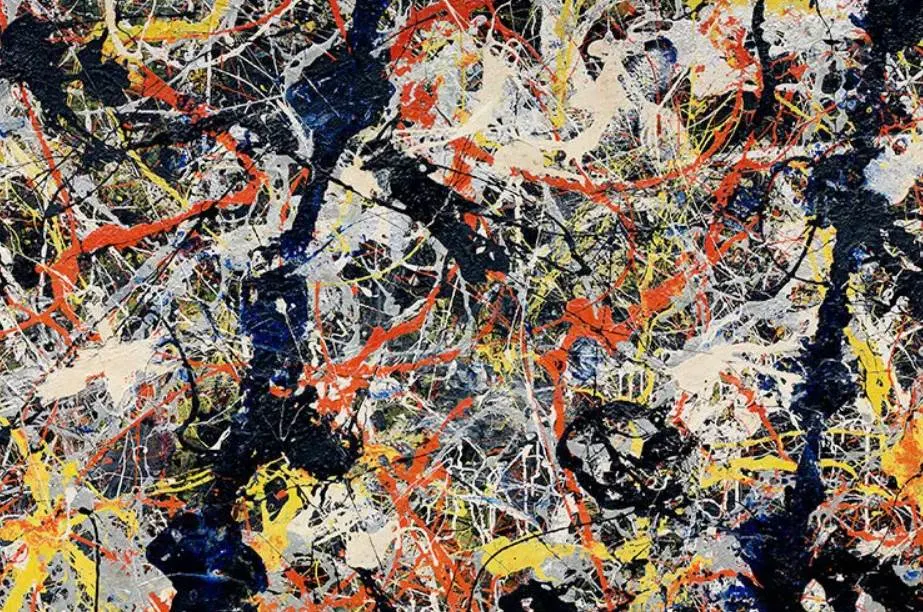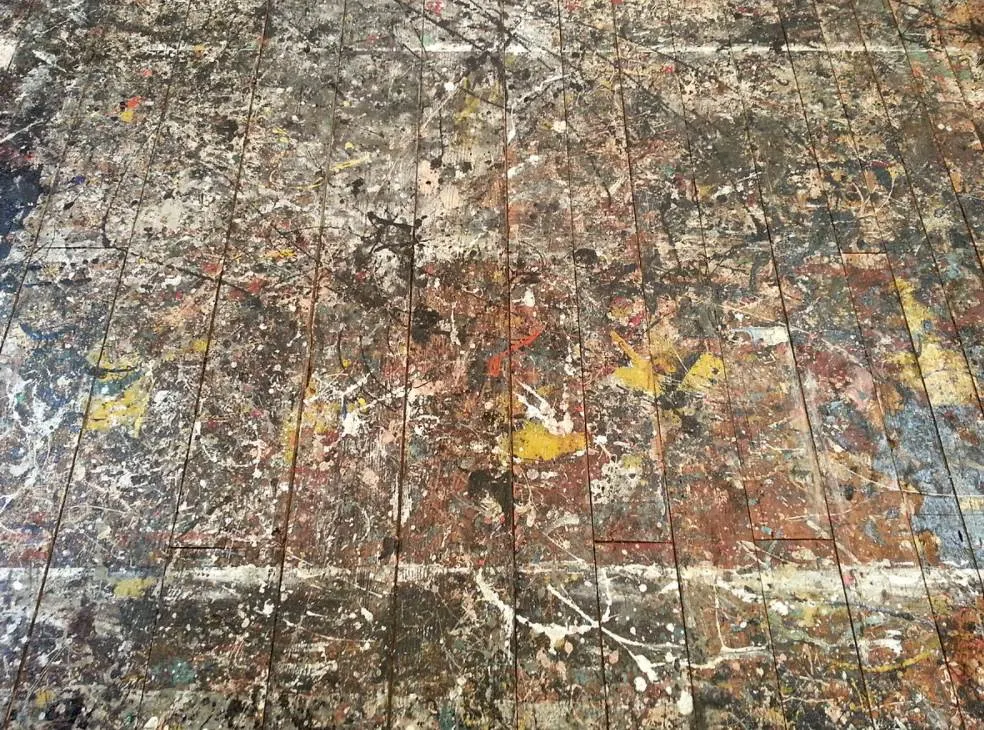One of the most famous paintings of Jackson Pollock, the leading Abstract Expressionist artist of the 20th century, actually has a title.
This statement might seem a bit peculiar, but Jackson Pollock (1912-1956) had a good reason not to give his art titles that might hint at what is depicted.
Let’s take a closer look at some of the most interesting facts about Blue Poles, a monumental work of art with blue elements by the American artist with a compelling story to tell.
1. The painting was completed in the early 1950s
Jackson Pollock was a revolutionary American artist who took Abstract art to a whole different level. He was initially inspired by Mexican artists who produced famous murals in the United States.
He studied at the Manual Arts High School in Los Angeles but receiving a formal education was never going to be a success for the eccentric artist.
When he discovered liquid paint while living in New York City in 1936, it allowed him to experiment with different types of painting. This developed into a controversial technique called “drip-painting.”
His so-called “dripped period” lasted between 1947 and 1951, but he still produced some works later on in his career.
Blue Poles is one of these works as it was completed in 1952.

2. The work originally had a different title
Just about all of Jackson Pollock’s paintings which he produced using the drip-painting technique were given titles with numbers.

Blue Poles was therefore originally referred to as “Number 11, 1952.” This doesn’t mean that it was the 11th painting that year because he assigned random numbers to these works.
Blue Poles appeared for the first time during an exhibition at the Sidney Janis Gallery in New York City in 1954.

3. It was completed around the time that he gave up drip-painting
One of the most fascinating facts about Blue Poles by Jackson Pollock is that the artist just about had abandoned his drip-painting technique when he completed it.
For unknown reasons, he decided to change direction in the early 1950s, a period in his life when he was already a successful artist.
The mystery of this decision is one of the reasons why Pollock remains an enigma in the art community today.
We do have to mention, though, that he battled alcoholism for most of his adult life. The paintings he produced afterward were very dark in nature and unsuccessful as well.

4. The painting’s title had a rather negative impact on the work
The gloomy paintings he produced in the early 1950s were followed by works in which Pollock tried to integrate some figurative elements.
This is most probably the main reason why he came up with a different title for “Number 11, 1952,” because the title “Blue Poles” reportedly originated from the artist himself.
The title wasn’t appreciated because it somehow puts the entire focus of the work on the bleu elements that run vertically across the canvas.
Art historian Dennis Phillips explained the problem with the title as follows:
The specific title limits our field of comprehension and does the painting a singular disservice. Because we look for the poles and miss much of the rest, the name is simply too distracting.

5. One of Pollock’s main patrons acquired the painting the year after he died
Jackson Pollock had some trouble acquiring the level of fame he managed to achieve at the peak of his career initially. After a couple of years, though, his distinctive paintings sold like hotcakes.
One of his main patrons was a renowned art collector named Ben Heller. He was the first owner of the painting as he purchased it the year after Pollock passed away in a self-inflicted car crash in 1957.
Heller paid $32,000 for Blue Poles, quite a hefty sum at the time. He loved it so much that he hung it at his 10th-floor apartment at Central Park West, a place it stayed for nearly 2 decades.
It’s fair to conclude that Heller played a major role in the establishment of abstract art. His patronage allowed artists like Jackson Pollock the freedom to experiment with controversial techniques.
Ben Heller passed away in 2019 at the age of 93.

6. How big is Blue Poles by Jackson Pollock?
This painting was produced using enamel and aluminum paint with glass on canvas. It’s an enormous work of art that covered the entire wall of Ben Heller’s apartment wall.
Blue Poles by Jackson Pollock has dimensions of 212.1 × 488.9 centimeters (83.5 × 192.5 inches).
7. The painting held a remarkable record in the early 1970s
Giving the title a specific name wasn’t the only controversy surrounding this amazing work of art. The sale of the painting in the early 1970s was arguably a lot more controversial.
Director James Mollison of the National Gallery of Australia wanted to acquire some important works of art during his tenure between 1971 and 1977.
He set his eye on buying Pollocks Blue Poles and Woman V by Willem de Kooning, two works that cost $1.3 million and $650,000 respectively.
Mollison, however, wasn’t authorized to make purchases exceeding $1 million, so he had to gain the approval of Australia’s Prime Minister at the time, Gough Whitlam.
The excessive sum was made public and sparked a wave of protest.
8. Where is the painting located today?
$1.3 million for an abstract work of art was deemed way too high at the time. The Heller family, however, hated to see the painting go.
Today, the painting is worth a multitude of this amount and has earned its cost back multiple times already.
The sale was completed and the painting became one of the main attractions at the National Gallery of Australia in Canberra, the country’s capital city.
Today, you can still admire the painting here as it’s part of the collection of the NGA!

